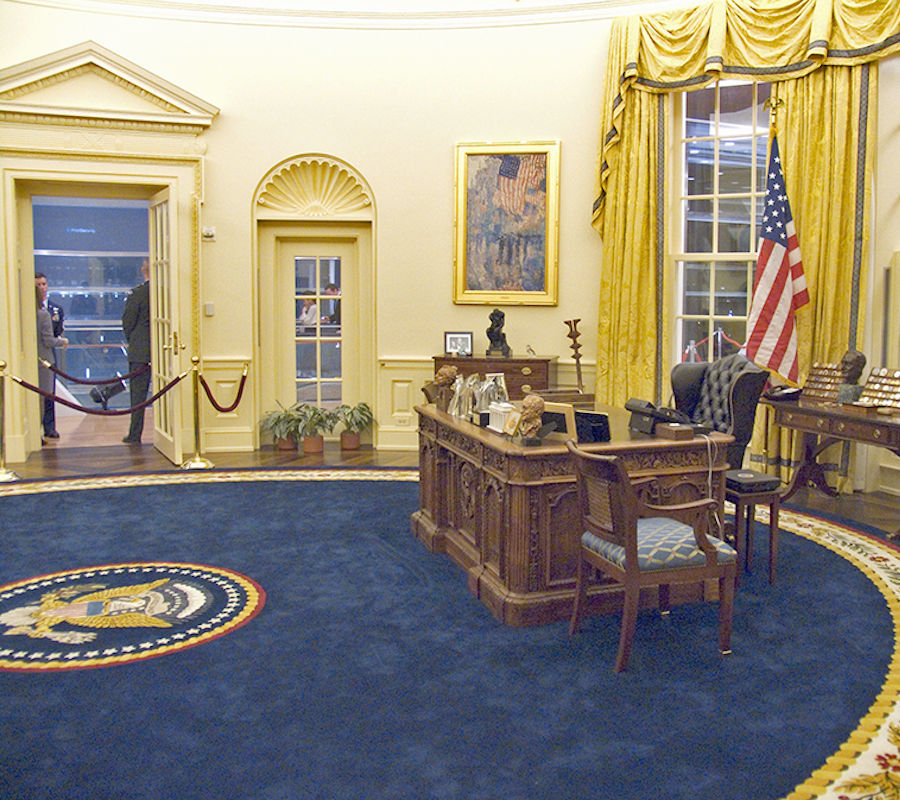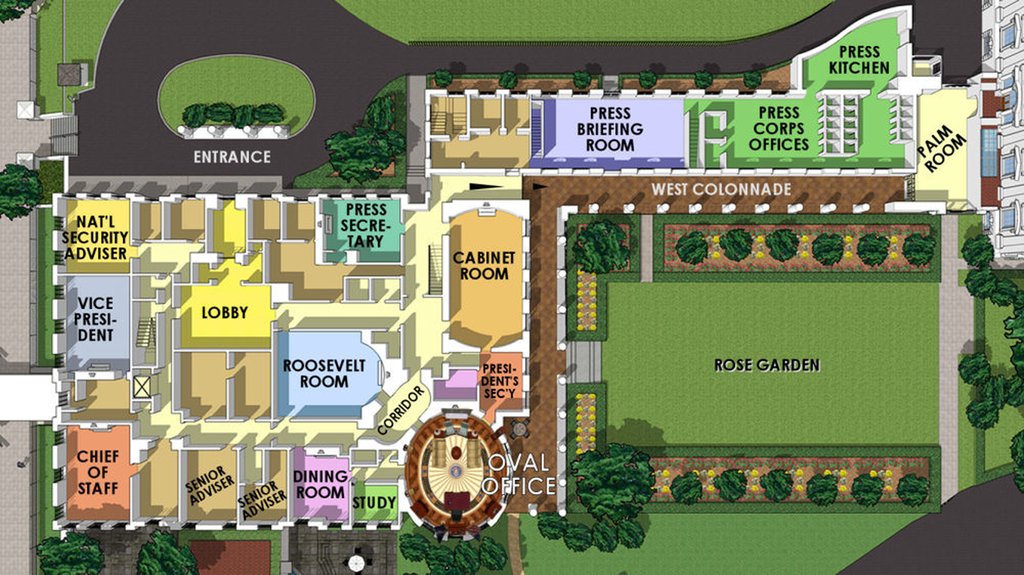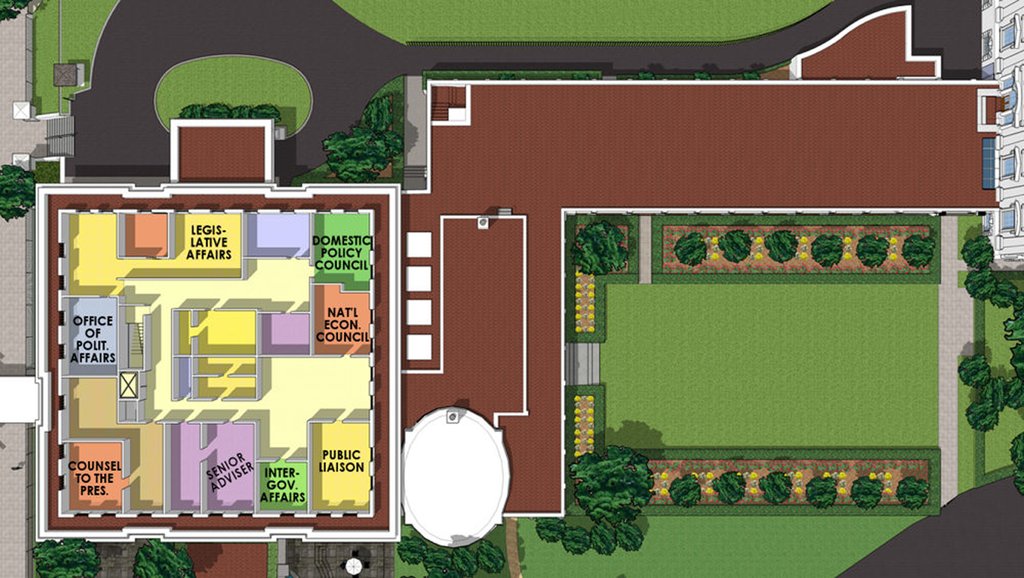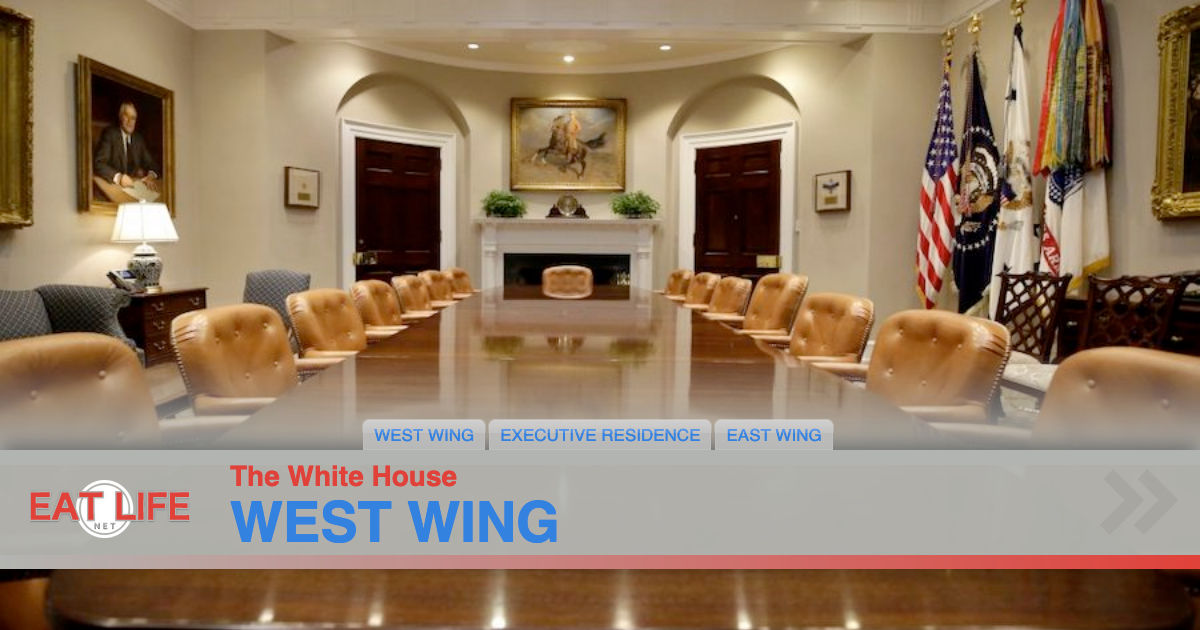WHITE HOUSE:
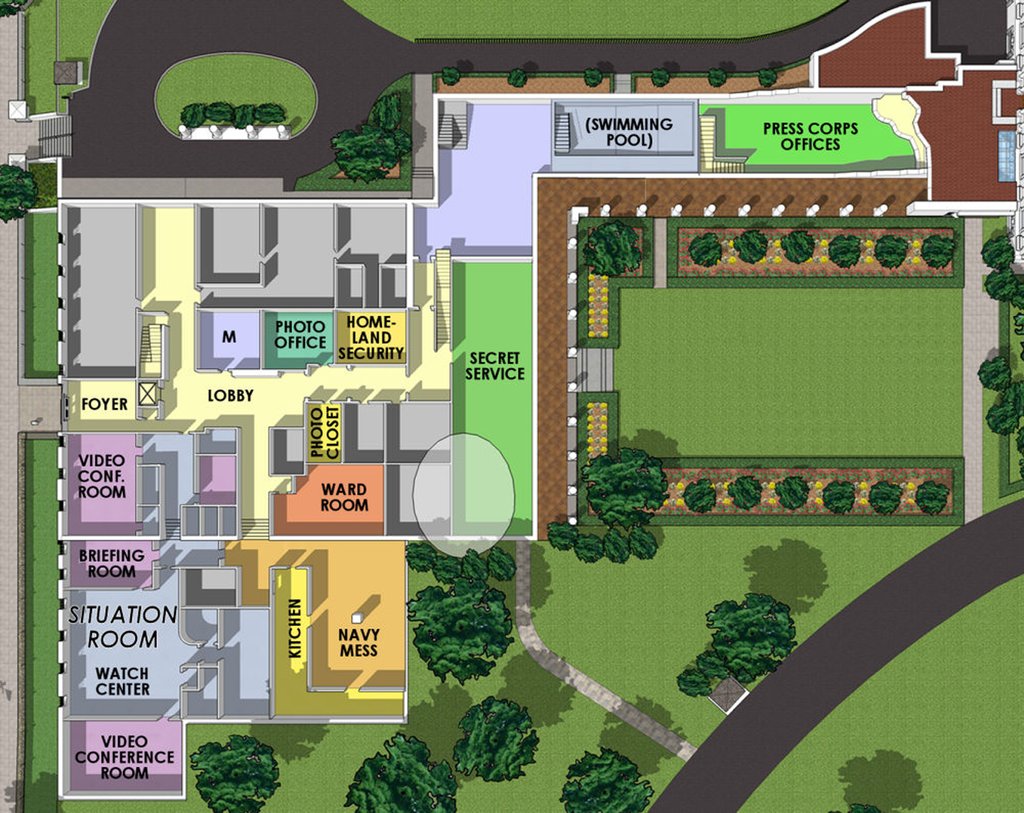
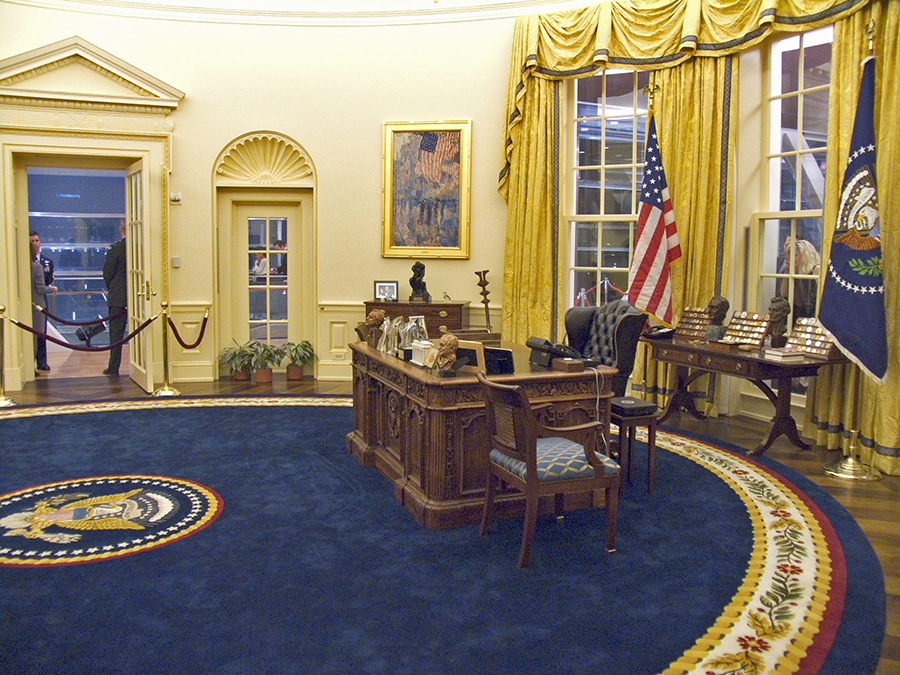
Before the White House was built, George Washington used a house in Philadelphia as his Executive Mansion. Before moving in, he ordered that the straight rear walls of the house's two main rooms be rebuilt into a bowed or semi-circular shape.
Doing so created an oval-shaped room that Washington intended to use as a space for a formal reception known as a "levee." The levee was an old tradition borrowed from the English court.
The levee involved a formal, somewhat-elaborate ritual intended to allow prominent members of society to meet the president. The rigid ceremony involved guests assembling in a circle after greeting the president. Washington believed the levee was a symbolic way to elevate and dramatize the newly-created office of the Presidency.
When he took office, Thomas Jefferson did away with the formal ritual of the levee, replacing it with a simple handshake. The legacy of the levee lived on, however, when it inspired the oval shape of the Blue Room in the newly-constructed White House.
The modern Oval Office dates back to 1909, when the West Wing of the White House was expanded under President Taft. A temporary executive office had been built in the West Wing during Theodore Roosevelt's first term.
Taft ordered an expansion of the structure and held a competition to choose an architect for the job. Nathan C. Wyeth, an architect from Washington, D.C., won the contest and designed the new West Wing expansion, which would include a new office for the president. Wyeth based the design of the new office for the president on the oval-shaped Blue Room. Eventually it became known as the Oval Office.
https://wonderopolis.org/wonder/is-the-oval-office-really-an-oval
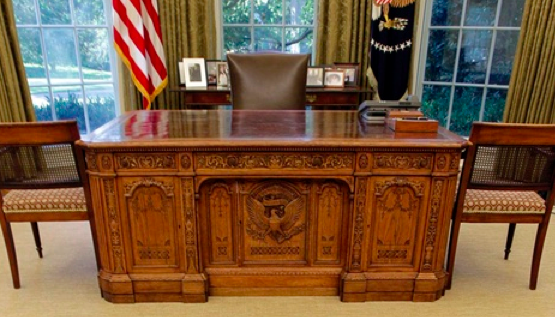
The desk was crafted from the English oak timbers of the British exploration ship called Resolute, so that's where its name came from. History of its creation is very interesting. H.M.S. ‘Resolute'was a part of the expedition sent in search of Sir John Franklin in 1852, and it was abandoned on 15th May 1854. In 1855, it was discovered and extricated by Captain Buddington of the United States Whaler ‘George Henry'. The ship was sent to England as a gift to Her Majesty Queen Victoria by President of the United States as a sign of a goodwill and friendship.
When the ship was broken up, this table was made of its timbers and sent to the President of the United States by Queen Victoria, "as a memorial of the courtesy and loving kindness which dictated the offer of the gift of the "Resolute."
It wasn't a part of the oval office until President John F. Kennedy. It was an idea of his wife, Jackie to bring this desk to the Oval Office for the first time.
After the assassination of President Kennedy in 1963, the desk was removed from the White House to the traveling exhibition with the Kennedy Presidential Library, and after that, it was displayed in the Smithsonian Institution.The desk was brought back to the Ovall Office in 1977 by the president Jimmy Carter who requested that this historic desk should be returned to the White House. After that is was used by Presidents Reagan, Clinton, Bush Jr, Obama and Trump.
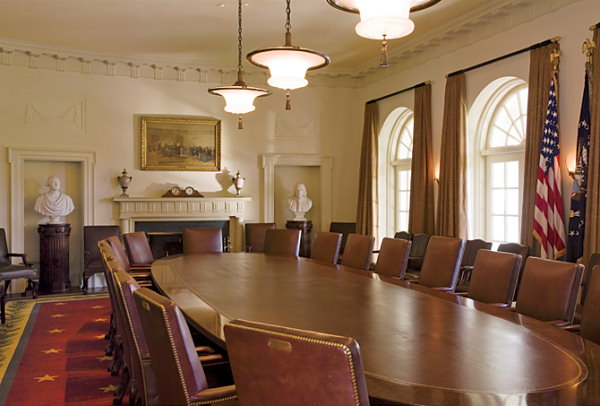
The Cabinet Room is used for routine meetings as well as serious deliberations. The table is in the shape of an oval. This room is used for the President to be able to communicate certain issues and make decisions.
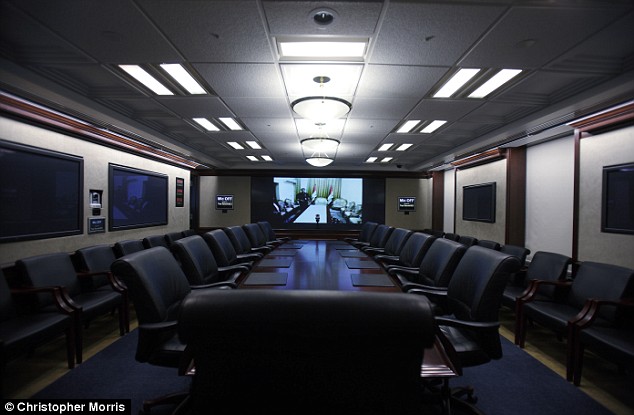
The command post where much of the President's most important work is done. 5,000 square feet. It has three secure video-conference rooms and a monitoring room staffed round the clock with analysts. Their function is to observe world events and ensure the President is aware of everything happening at home and abroad.
https://www.dailymail.co.uk/home/moslive/article-1125921/Welcome-world.html
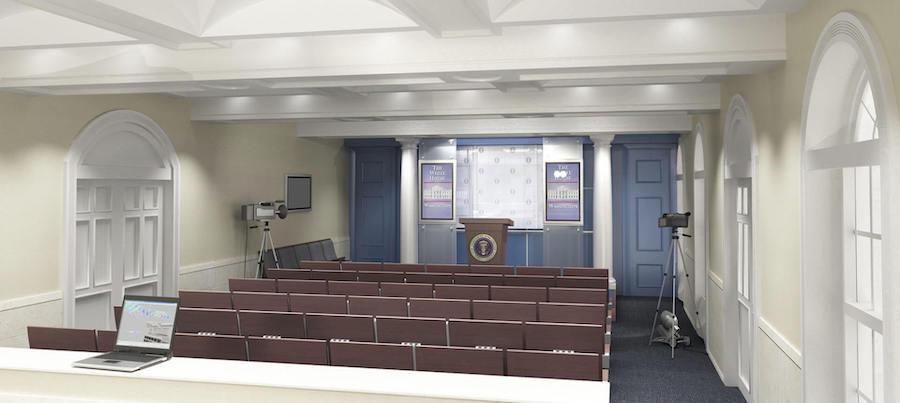
A space that has buzzed with near-constant activity since the Nixon administration. Originally configured to house media outlets operating in the early 1980s.
https://www.callisonrtkl.com/projects/white-house-press-briefing-room
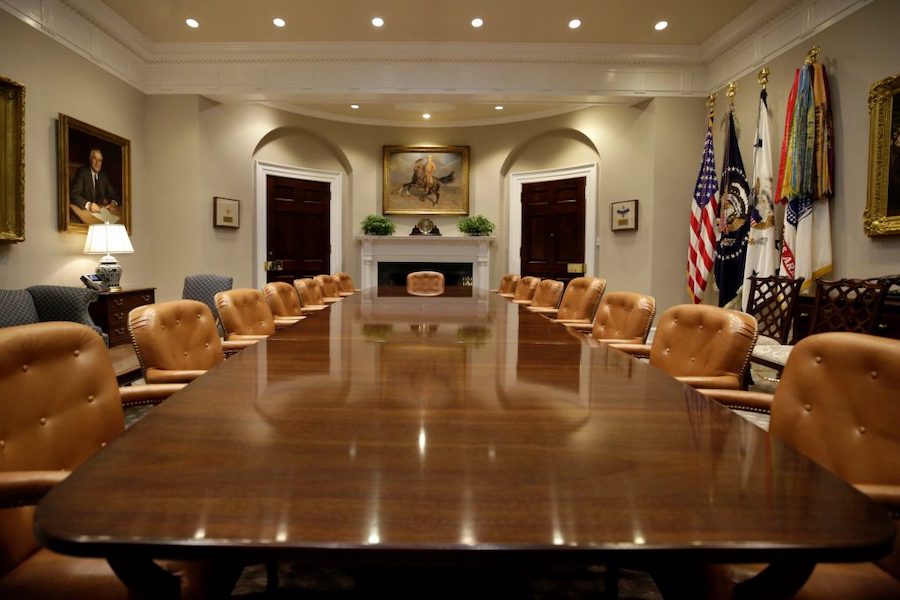
Used for daily meetings for the White House staff.
